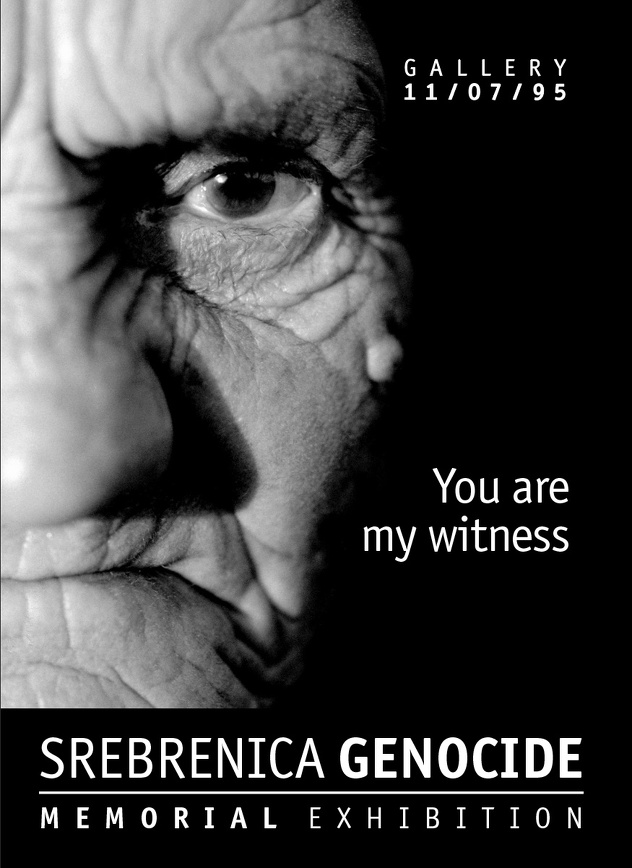Yesterday, the remains of 30 victims of the Srebrenica genocide, found in numerous mass graves, were buried at the memorial cemetery in Potočari. Twenty-eight years after the genocide, many families are still searching for the remains of their loved ones. Remembering the victims of the genocide is both the theme and purpose of the existence of Gallery 11/07/95, which today marks its eleventh anniversary.
As part of this year’s commemoration of Gallery 11/07/95 and (re)remembering the Srebrenica genocide, a portrait of a mother from Srebrenica is exhibited on the building where the Gallery is located in the heart of Sarajevo.
The intention of displaying this artwork in an external space, within the view of everyday passers-by, is to promote the idea that remembering Srebrenica should not be confined solely to isolated spatial and temporal commemorative contexts. The portrait of the mother from Srebrenica was created in 2003, in one of the refugee camps where survivors, mostly women and children, were accommodated, and it is part of Tarik Samarah’s monograph “Srebrenica.”

At the time the photograph was taken, there was still hope and the possibility that some of the people from Srebrenica were alive. The mother in the exhibited portrait is aware that the bodies of her loved ones are in mass graves. Her gaze does not show hope; it is a gaze that demands justice and calls us to remember responsibly.
How we remember Srebrenica is one of the questions we want to pose through the exhibition of this artwork. Believing that the Srebrenica genocide represents a key and reference point of our present and significantly shapes our future, this art installation aims to connect the concepts of trauma, memory, and art.
The displayed photograph bears the inscription “You are my witness,” emphasizing the understanding of art as an engaged cultural practice in which the ultimate recipient becomes an active participant in the realization process of the artwork. Gallery11/07/95 has been engaged in this very concept through its previous work—a committed and responsible approach to the culture of remembrance.
“Our goal is to establish a form of (re)remembering that will not get lost in phrases and rigid forms of remembrance but will serve as living memory. Anniversaries are certainly important; they are ‘strong places’—a kind of markers of specific traumatic events. However, it is essential to continuously work on the culture of remembrance and not allow Srebrenica to be remembered only one day a year,” stated Tarik Samarah, founder of Gallery11/07/95 and author of the exhibited artwork.
The message of the artwork displayed on the building where Gallery11/07/95 is located is directed at all of us; it calls us to take responsibility and question our own role in transmitting the memory of the Srebrenica genocide.